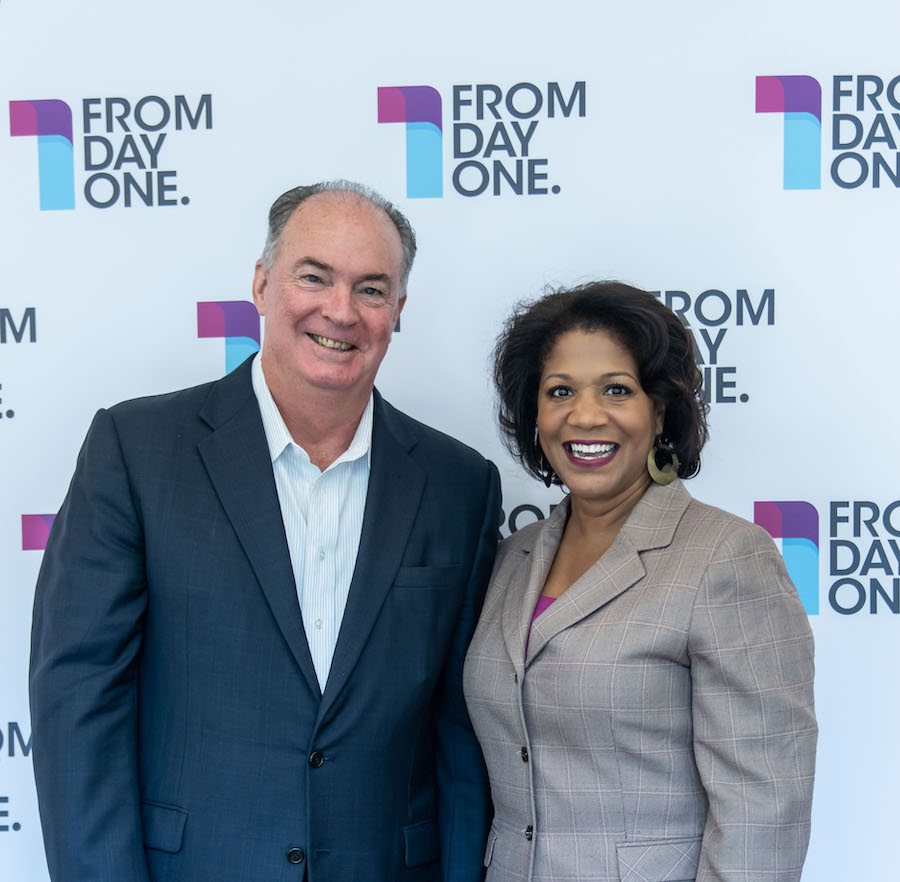The Culture of H-E-B: Why Employees (and Customers) Are So Devoted


Texans don’t say, “We’re going grocery shopping,” they say, “We’re going to H-E-B.”
Mayerland Harris, group VP of talent at H-E-B, said the reason for that is all about the company’s values. “Doing what’s right simply because it’s the right thing to do, not for the accolades and not for profit, but to help our community” is a value that underscores every decision at H-E-B, which employs about 154,000 employees in more than 430 stores in Texas and Mexico. Doing what’s right plays out in how the company treats its employees, referred to as “Partners,” as well as their suppliers, and their customers. Harris was interviewed by Dan Goodgame, editor in chief at Texas Monthly, in a fireside chat at From Day One’s Austin conference.
H-E-B is always looking for ways to integrate innovative technologies throughout its business but, as a people company, prioritizing the relationship with the customer comes first. That means giving customers options, like offering curbside, home delivery, and self-checkout while making sure H-E-B partners provide excellent customer service.
Doing Right By Employees
H-E-B is renowned for its ability to retain employees for long careers. According to Comparably.com, “H-E-B is in the top 10% of similar sized companies in its ability to retain quality employees. Fifty percent of employees would not leave H-E-B if they were offered a job for more money, while 75% are excited to go to work each day.” Harris, a 32-year H-E-B veteran, said she’s remained with the company for so long because “I get to bring my authentic self to work every single day.” Many of Harris’s coworkers have been by her side for over 25 years. “Caring about your employees, giving them respect and ownership in something bigger than just a job is the secret to creating a feeling that can’t be replicated,” said Harris.

At H-E-B, employees have the opportunity to work in many different departments, so they can learn, grow, and pursue a career path of their choosing. Those opportunities are inclusive. “We employ everyone, from all kinds of backgrounds. H-E-B is here to serve all Texans.” Harris said. H-E-B has also earned a reputation for its commitment to employee well-being.
Taking Care of the Community
H-E-B is at the forefront of emergency preparedness and disaster relief, sending convoys including Disaster Response Units, with a pharmacy and business-services center, where locals can fill prescriptions, cash checks, pay bills, and access an ATM. While many of their relief efforts are unadvertised, this role has earned the company significant amounts of goodwill.
In 2021, when the “Snowmageddon” struck Texas, Goodgame recalled that an H-E-B store manager let customers take their groceries free of charge when the store power suddenly went out and check stands were down. Other stores handed out bouquets of fresh flowers to customers as they waited in line to shop. These decisions of goodwill were not in any training classes. Our store managers made the choice and we celebrate them because “we empower people to do what’s right," said Harris.
Leading a Quest for Quality and Innovation
H-E-B keeps in mind why we visit their stores: local flavor, fresh food, and new ideas.
The company features the Texas Department of Agriculture’s GO TEXAN mark on more than 3,700 products. The H-E-B Quest for Texas Best contest allows locally owned food-and-beverage suppliers as well as non-food suppliers a chance to break into the highly competitive grocery market by placing their items on H-E-B shelves and a chance at winning up to $25,000 in prize money.
“We source as much as we can locally in our communities and across Texas,” Harris said. “And we’re proud to say that we support so many small business owners, small farmers, and small producers. If you can produce things here, think how much fresher that product is than something that you procure elsewhere.”
Gail Gonzales is a writer, brand strategist, and designer based in Austin. Her boutique agency, Evolve Your Brand, helps business owners who care about the positive evolution of people or the planet amplify their message.
The From Day One Newsletter is a monthly roundup of articles, features, and editorials on innovative ways for companies to forge stronger relationships with their employees, customers, and communities.